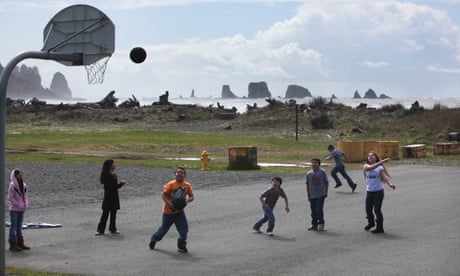Category : Climate Change | Location : International | Posted on 2021-04-13 03:08:49

| When the world shut down last year, there was one big beneficiary: the planet. With travel ground to a halt, emissions fell 10% in 2020. But we haven’t kept up the momentum – as economies reopen, carbon emissions are expected surpass pre-pandemic levels in the coming months, unless countries take urgent action. We are in an emergency. California is on the brink of drought, prompting fears of a new wave of devastating megafires later this year. Rising temperatures could soon make the planet’s tropical regions unlivable for humans. Yet a Guardian investigation recently found that only a small number of major countries have been pumping rescue funds into a low-carbon future. Two years ago, the Guardian announced it was changing the language it uses to talk about the environment, eschewing terms like “climate change” for the more appropriately urgent “climate emergency”. Today, we are joined by others in the news industry, organizations that recognize that a global catastrophe is already here, and that without immediate action, it will get unimaginably worse. These organizations are part of Covering Climate Now, an initiative founded in 2019 by Columbia Journalism Review and the Nation, with the Guardian as the lead partner, to address the urgent need for stronger climate coverage. More than 400 newsrooms from around the world – with a combined audience nearing 2 billion people – have joined Covering Climate Now. Ahead of Earth Day on 22 April, the Guardian, CCN and partners will elevate the climate crisis by publishing stories around the theme “Living through the climate emergency”. We will open our climate coverage for partners – some of whom don’t have dedicated climate reporters – to republish. And we will host a curated collection of climate stories from our partners on the Guardian’s website. That collection will live here. To kick off the week, a number of outlets have joined together to declare what has long been evident: the climate emergency is here. Our statement is below. We invite all of our colleagues in the media industry to join us. The planet is burning. It’s time for journalism to recognize that the climate emergency is here. This is a statement of science, not politics. Thousands of scientists – including James Hansen, the Nasa scientist who put the problem on the public agenda in 1988, and David King and Hans Schellnhuber, former science advisers to the British and German governments, respectively – have said humanity faces a “climate emergency”. Why “emergency”? Because words matter. To preserve a livable planet, humanity must take action immediately. Failure to slash the amount of carbon dioxide in the atmosphere will make the extraordinary heat, storms, wildfires and ice melt of 2020 routine and could “render a significant portion of the Earth uninhabitable”, warned a recent Scientific American article. The media’s response to Covid-19 provides a useful model. Guided by science, journalists have described the pandemic as an emergency, chronicled its devastating impacts, called out disinformation, and told audiences how to protect themselves (with masks, for example). We need the same commitment to the climate story. As partners in Covering Climate Now, a global consortium of hundreds of news outlets, we will present coverage in the lead-up to Earth Day, 22 April, around the theme “Living Through the Climate Emergency”. We invite journalists everywhere to join us. | |||
| SOURCE : https://www.theguardian.com/environment/2021/apr/12/covering-climate-now-guardian-climate-emergency |